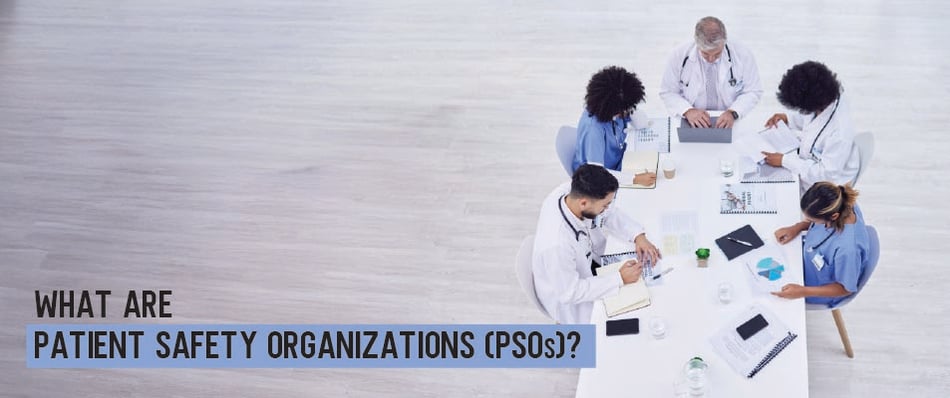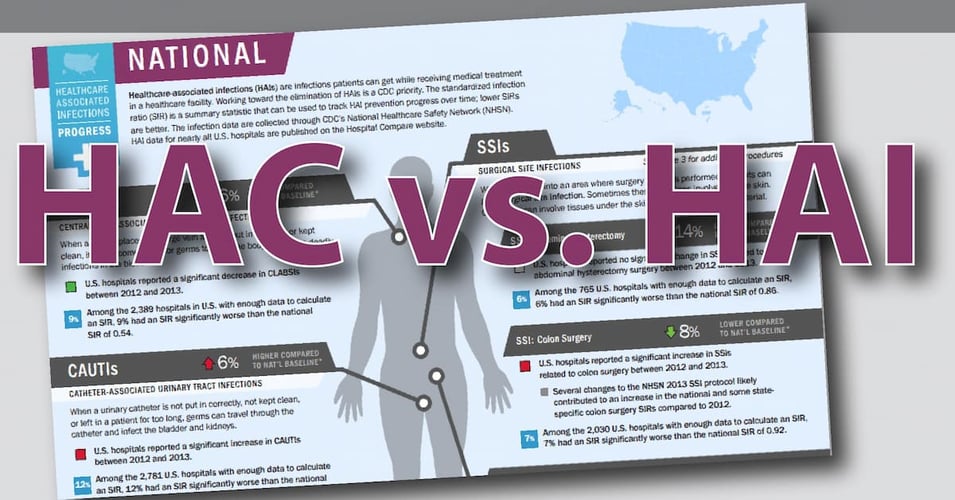What is a Patient Safety Organization (PSO)?

Patient safety is at the heart of healthcare. After all, even the Hippocratic Oath starts with "First, do no harm." Hospitals, clinics, and care facilities across the country work hard to reduce errors and prevent harm, but they don’t do this work alone. One of the most important allies in this effort is the Patient Safety Organization, or PSO. In today's post, we'll learn about the unique environment created by PSOs and how they help facilities keep patients safe.
What is a PSO?
When Congress enacted the Patient Safety and Quality Improvement Act in 2005, a provision was made for granting privilege and confidentiality to PSOs to facilitate shared learning and enhanced quality. These PSOs would be federally-designated (by the Secretary of Health and Human Services and the Agency for Healthcare Research and Quality) in order to have the legal protections needed to access and analyze patient information with the understanding that this information would be used to improve patient safety. Today, there are 125 PSOs serving hospitals and other medical facilities across all states.
What is so important about confidentiality and privilege?
A hospital’s internal quality review data isn’t automatically protected under the Patient Safety Act. To get those confidentiality protections, it has to submit or work with a recognized PSO. The Patient Safety Act was created to encourage healthcare providers to share information about medical errors and safety issues without fear of punishment or legal exposure. However, those protections (meaning that certain safety data can’t be used against the provider in court or publicized) don’t automatically apply to all internal safety investigations. They only apply if the provider collects and analyzes that information as part of a formal Patient Safety Evaluation System (PSES) that reports to, or works with, a federally listed PSO. A federally listed PSO is an organization officially recognized by AHRQ as meeting strict criteria for how it collects, analyzes, and protects patient safety data.
How Are PSOs Formed?
Any public or private entity can apply to become a PSO, as long as it meets the criteria laid out by AHRQ. To qualify, organizations must:
- Have expertise in analyzing patient safety events and risks.
- Establish clear policies to protect the confidentiality of reported information.
- Demonstrate the ability to collect, aggregate, and analyze data from healthcare providers.
Healthcare systems, universities, nonprofit organizations, or even private companies can form PSOs, provided they meet these requirements and maintain compliance with federal standards.
What Do Patient Safety Organizations Do?
PSOs serve as hubs where hospitals, clinics, and other providers can confidentially report medical errors, near misses, and safety concerns. They then:
- Collect and aggregate safety data from multiple providers.
- Analyze trends and root causes of errors.
- Share findings, tools, and best practices back with providers.
- Provide feedback that helps facilities reduce risks and improve outcomes.
Who Works for a PSO?
A PSO typically employs a mix of experts, including:
- Clinical professionals (physicians, nurses, pharmacists) who understand medical practice.
- Data scientists and analysts who can detect patterns across large datasets.
- Patient safety specialists who design and evaluate improvement strategies.
- Legal and compliance experts who ensure federal protections are upheld.
- Educators and trainers who help providers implement best practices.
Together, this multidisciplinary team ensures that lessons learned translate into safer care across the healthcare system.
How Do PSOs Keep Patients Safe?
By creating a confidential, non-punitive space for reporting, PSOs encourage providers to speak up about errors and near misses that might otherwise go unreported. This approach:
- Builds a culture of safety instead of blame.
- Helps facilities learn from mistakes before they are repeated.
- Develops national benchmarks and evidence-based solutions.
- Spreads proven safety practices across the healthcare community.
Who Regulates Patient Safety Organizations?
Patient Safety Organizations are regulated by the U.S. Department of Health and Human Services (HHS), specifically the Agency for Healthcare Research and Quality (AHRQ). They were created under the Patient Safety and Quality Improvement Act of 2005 (PSQIA) to give healthcare providers a safe way to share and learn from information about errors and adverse events without fear of legal exposure.
Once an organization is officially listed by AHRQ as a PSO, it must meet strict federal criteria to maintain its status, including protections for patient and provider confidentiality.
Ultimately, PSOs protect patients by reducing the chances of harm, improving quality of care, and making the entire healthcare system more resilient.
Patient Safety Organizations are a vital part of the U.S. healthcare safety net. Regulated by AHRQ, they gather and analyze safety data, protect providers and patients through confidentiality, and share best practices that prevent harm. By fostering collaboration, transparency, and continuous learning, PSOs help keep patients safer every day.
![EOScu Logo - Dark - Outlined [07182023]-01](https://blog.eoscu.com/hubfs/Eoscu_June2024/Images/EOScu%20Logo%20-%20Dark%20-%20Outlined%20%5B07182023%5D-01.svg)

![Outpatient Services and Infection Prevention: Tracking Infections [Part 4]](https://blog.eoscu.com/hs-fs/hubfs/Small_Blog_Headers/Outpatient_Services-01.jpg?height=500&name=Outpatient_Services-01.jpg)


